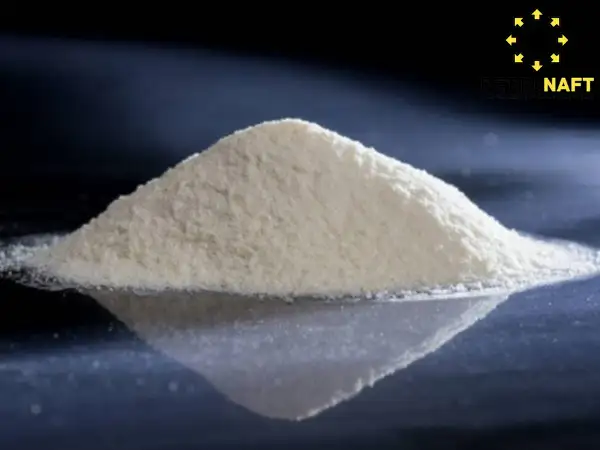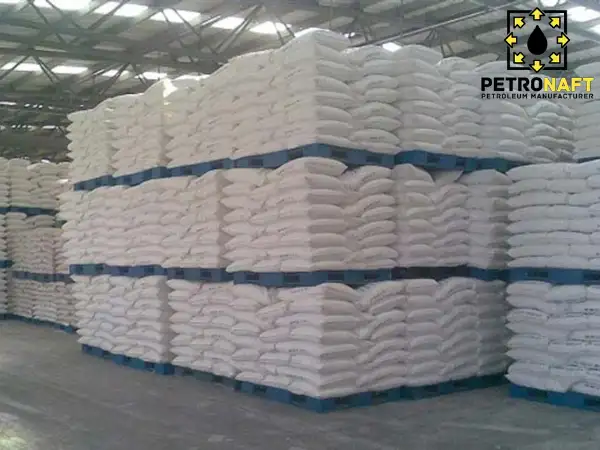SODA ASH
Content Overview
INTRODUCTION OF SODA ASH
Soda ash, also known as sodium carbonate, is an essential chemical compound that has a wide range of applications across various industries. In this page, we will explore the history, types, properties, production, and applications of soda ash. We will also look at the product’s chemical formula, CAS number, and HS code, as well as its importing, exporting, and producing countries in the world. Additionally, we will discuss the factors affecting the product’s price, safety tips, packaging, transportation, and storage.
Soda ash Brief Description
Soda ash is an odorless, white, and granular powder that is soluble in water. It is an alkaline substance with a pH of around 11, making it a strong base. The product has various industrial uses, ranging from glass manufacturing to cleaning agents.
What is the Soda ash?
Soda ash, also known as sodium carbonate, is a chemical compound with the chemical formula Na2CO3. It is a salt that contains sodium cation (Na+) and carbonate anion (CO32-). The compound has a high solubility in water, which makes it an excellent cleaning agent.
Soda ash History
Soda ash has been used for thousands of years, dating back to ancient Egypt. The compound was initially obtained from the ashes of burnt seaweed, which contained high levels of sodium carbonate. The compound was used as a cleaning agent, in the manufacturing of glass, and as a flux in metallurgical processes. With time, soda ash production methods have evolved, making the compound readily available to various industries.
Soda ash Other Names
Soda ash has other names, including washing soda, soda crystals, and sodium carbonate decahydrate.
Soda ash Grades, Types, and Forms
Soda ash is available in different grades, types, and forms. The most common types are dense soda ash and light soda ash. Dense soda ash, also known as heavy soda ash, has a bulk density of around 1.0-1.1 g/cm3. It is mainly used in the manufacturing of glass, detergents, and chemicals. On the other hand, light soda ash, also known as light dense soda ash, has a bulk density of around 0.5-0.6 g/cm3. It is used in the manufacturing of detergents and chemicals, as well as in water treatment processes.
Soda ash is available in different forms, including powder, granules, and briquettes. The form of the product depends on the application requirements and transportation needs.
Different Applications Between Various Soda ash Grades, Types, and Forms
Different grades, types, and forms of soda ash have varying applications. Dense soda ash is mainly used in glass manufacturing, whereas light soda ash is used in the manufacturing of detergents, chemicals, and water treatment processes. Granular soda ash is preferred in water treatment processes due to its slow dissolution rate, while powder soda ash is preferred in the manufacturing of cleaning agents.
Soda ash Production Different Types
Soda ash can be produced using different methods. The most common production methods are the Solvay process, Hou’s process, and the Leblanc process.
The Solvay process is the most commonly used method for producing soda ash. The process involves reacting salt, ammonia, and carbon dioxide to produce sodium bicarbonate. The sodium bicarbonate is then heated, producing soda ash.
Hou’s process involves reacting sodium chloride with ammonia and carbon dioxide to produce sodium bicarbonate. The sodium bicarbonate is then calcined to produce soda ash.
The Leblanc process, which was used to produce soda ash in the past, involves reacting sodium chloride with sulfuric acid to produce sodium sulfate. The sodium sulfate is then heated with coal and calcium carbonate, producing soda ash.
Soda ash Specifications
The chemical formula for soda ash is Na2CO3, with a molecular weight of 105.99 g/mol. The CAS number for soda ash is 497-19-8, and its HS code is 283620.
Soda ash Properties
Soda ash has several properties that make it useful in various industrial applications. It is a white, odorless, and granular powder with a pH of around 11. It is soluble in water and forms an alkaline solution. Soda ash has a high melting point of 851°C and a density of 2.53 g/cm³. It is a hygroscopic substance, meaning it can absorb moisture from the air.
Soda ash Advantages
Soda ash has numerous advantages, making it a valuable substance across various industries. It is a cost-effective and readily available material that can be produced using different methods. It has excellent buffering capacity, which makes it useful in water treatment processes. Additionally, soda ash is an excellent cleaning agent, making it ideal for use in the manufacturing of detergents and cleaning agents. Its ability to lower the melting point of silica makes it essential in the manufacturing of glass.
Soda ash Safety Tips
Soda ash is a hazardous substance that requires careful handling. The product can cause skin and eye irritation if it comes into contact with the skin or eyes. It can also cause respiratory irritation if inhaled. When handling soda ash, it is essential to wear protective clothing, including gloves, goggles, and respirators. It is also crucial to store the product in a cool, dry place away from sources of ignition.
Soda ash Producing Countries in the World
Soda ash is produced in different countries worldwide. The top soda ash-producing countries include China, the United States, and Turkey. Other countries that produce soda ash include India, Russia, and Kenya.
Soda ash Importing Countries in the World
Soda ash is a widely traded substance, with many countries importing it from other countries. The top soda ash importing countries include India, the United States, and Brazil. Other countries that import soda ash include Japan, Thailand, and Indonesia.
Soda ash Exporting Countries in the World
Soda ash is also widely exported, with many countries exporting it to other countries. The top soda ash exporting countries include the United States, China, and Turkey. Other countries that export soda ash include Mexico, Egypt, and Russia.
Factors Affecting Soda ash Price
Several factors influence the price of soda ash, including supply and demand, production costs, transportation costs, and currency exchange rates. Changes in these factors can affect the price of soda ash in the global market.
SODA ASH APPLICATIONS
Soda ash has numerous applications across various industries. Some of the primary applications of soda ash include:
Glass Manufacturing: Soda ash is a vital ingredient in the manufacturing of glass. It lowers the melting point of silica, making it easier to work with.
Detergents: Soda ash is used in the manufacturing of detergents and cleaning agents due to its excellent cleaning properties.
Chemicals: Soda ash is used in the manufacturing of various chemicals, including sodium silicate, sodium bicarbonate, and sodium chromate.
Water Treatment: Soda ash is used in water treatment processes to adjust pH levels and remove impurities.
Applications in Drilling Industry
Soda ash is also used in the drilling industry as a drilling fluid. The product is used as a buffering agent to maintain the pH level of the drilling fluid. Additionally, soda ash can be used to prevent clay swelling and stabilize shale formations.
SODA ASH PACKING
Soda ash is packaged in different ways, depending on the form of the product and the application requirements. Granular soda ash is usually packaged in 50 kg bags or 1-ton bags, while powder soda ash is packaged in 25 kg bags or 1-ton bags. Liquid soda ash is packaged in bulk containers or tanker trucks.
The packaging of soda ash is designed to ensure safe and easy transportation, storage, and handling of the product. It is important to follow proper handling and storage procedures to prevent contamination or damage to the product.
Soda ash Transportation and Storage
Soda ash is transported in various ways, including rail, truck, and sea freight. It is important to ensure that the product is transported in a safe and secure manner, following all relevant regulations and guidelines. Proper labeling, documentation, and handling procedures should be followed to prevent accidents or spills during transportation.
During storage, soda ash should be kept in a dry, cool, and well-ventilated area away from sources of ignition. The product should be stored in a dedicated storage area, away from other incompatible substances. Care should be taken to prevent exposure to moisture, which can cause the product to clump or cake. Proper labeling and signage should be used to identify the storage area and indicate any hazards associated with the product.
Explore related articles on this product via the tag link below:





Goodday.
We are looking for suppliers of Soda Ash Dense product pls contact us asap.
Thank you Regards
Abel Write
Thank you for your comment. Please send your request using the form below.
https://www.petronaftco.com/purchase-inquiry/